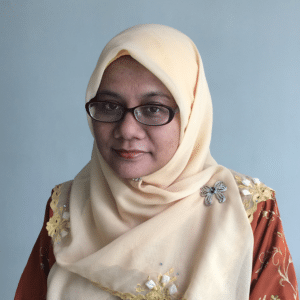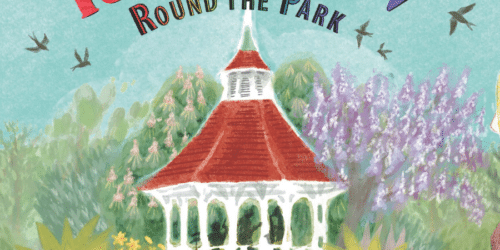
My journey in literary translation began in 2015 when I was tasked to edit a series of children’s books translated from English to Malay. I went on to translate mostly children’s picture books from English and Bahasa Indonesia into Malay, primarily for Singapore Malay (young) readers. Aside from these, I have translated and edited translations of fiction and non-fiction.
One of the earliest things I learnt about translating is that the endeavour needs time—to read, research, translate and revise. Research may include going through reference books, online sources, videos and finding experts. A 500-word picture book about a grey heron wanting more out of life may require research on whether the particular breed of heron has a specific name in Malay and various Malay terms related to the coastline, estuary, and sea creatures. A single word may have different shades of meaning, or it may be a new term in English that has yet to be given its equivalent in Malay and entered into the standard dictionaries.
Thus, my first tip would be to ask the publisher for a copy of the text for me to skim through, the publication format and when the publication is due before accepting any translation offer.
My next suggestion is to hold back the urge to translate the text immediately. Each time I start on a project, a tiny bud of anxiety grows; I worry if I can do justice to the text. So, I make sure that I spend time reading for the pleasure of getting to know the text: its content, message, flow and layers of meaning, and the writer’s style. In the second reading, I make notations along the margins or underline phrases that may pose challenges.
If the book has illustrations, I will flag those that may need changes to help the target reader understand the text or story better. For instance, a wordless illustration may have an empty bridge as the main point of reference, but my young target readers may not understand the intent or significance because bridges in Singapore look totally different. Books with illustrations become more challenging when the translation must fit into fixed spaces such as speech bubbles or text boxes in comics or graphic novels. I would ask for a PDF of the original publication to help me gauge the length of translation I am allowed.
The next tip is to have another discussion (or two) with the publisher or editor before I start translating or beginning my research. If I am about to translate a picture book, the queries I may raise include whether the publisher expects the translation to be in rhyme like the source text or if it is possible to change to the illustrations. If the source book has sections such as activity pages, supplementary information, conversation cues or signboards and labels within images, I will ask if I am to translate these as well.
I would also ask about the publisher’s house style. It makes the translation and editing processes smoother when things such as words to be in italics are clarified right from the start. If need be, I would also make my own style recommendations, such as honorifics for different family members.
The fourth tip concerns the target reader. I must know who my target reader is. A line may be translated grammatically correct, accurate in conveying the meaning as intended by the writer, but sound stiff or foreign to the target reader, for instance, dialogues. One method of capturing the target reader’s typical speech patterns and specific phrasings is by directly interacting with them. However, when I translate for young readers and am unable to test out my translation directly with them, I seek teachers and parents who can advise me if some aspects of the translation, such as vocabulary and affixes, are within their young charges’ language ability.
For books targeted at young readers, the inclusion of colloquial terms, localising words such as names of food, “big words”, and the level of language formality are matters that require me to consult teachers and the editor. English is so dominant in Singapore that Malay children are becoming less proficient in their mother tongue. A word in English may have an equivalent in Malay, but that word may be unfamiliar to the eyes and ears of the typical Malay child. So, do we translate the one English word using two or five “simple and familiar” words in Malay that convey the meaning (hence adding to the word count), or do we use the one “not-so-familiar” equivalent word in Malay to enrich the child’s vocabulary?
I also always read aloud my translations that are meant for young readers. By doing this, I can catch phrases that may trip up the adult reader and see if the auditory flow can attract the young reader. In fact, reading aloud my translations meant for any target group helps me to identify any areas that sound stiff or need more clarity.
Finally, during the whole process of translating and revising, there are times when I find myself unable to move forward. It could be a phrase that I just could not get right, or the register seems “off”. I usually step away from the task for an hour or maybe a day and leave the particular problem at the back of my head as I do other things. Sometimes, I read (in relaxed surroundings) pieces similar to the one that I am translating in the target language. (Reading works of similar genre before I begin the whole translation process is also akin to a “warm-up” exercise to the task.) Hopefully, specific passages may direct me to the solution to my problems. Perhaps it is a matter of revisiting the source text, making sure I fully understand the problematic sentence or passage and finding a different way of conveying the meaning in the target language. Or perhaps I need to make bold choices of shifting or expanding lines, replacing words to make the text more accessible and meaningful to the target reader.
As a writer, I hope readers can find a connection with my stories. As a translator, I hope my translations will connect other authors’ works to more readers across communities and borders. Translation is a challenging and fulfilling endeavour, and I hope my sharing above has been helpful to emergent translators.

 Nur-El-Hudaa Jaffar has translated children’s picture books, fiction and poetry since 2017. She won the Inaugural MASTERA Translation Prize for Poetry in 2019 and has conducted translation workshops for students. She is also an editorial consultant and the author of eight children’s picture books. In 2017, her short stories won the first and second prizes at the Golden Point Award (Malay language category), organised by the National Art Council of Singapore. She has been a moderator and speaker at events such as the Singapore Writers Festival and the Asian Festival of Children’s Content.
Nur-El-Hudaa Jaffar has translated children’s picture books, fiction and poetry since 2017. She won the Inaugural MASTERA Translation Prize for Poetry in 2019 and has conducted translation workshops for students. She is also an editorial consultant and the author of eight children’s picture books. In 2017, her short stories won the first and second prizes at the Golden Point Award (Malay language category), organised by the National Art Council of Singapore. She has been a moderator and speaker at events such as the Singapore Writers Festival and the Asian Festival of Children’s Content.
Nur-El’s residency is generously supported by the National Arts Council of Singapore.
You may also like...
‘Rainbow Round the Park’ by Amanda Addison and Hsuan Pai
Read our Stories of Cities, Cities of Stories virtual residents’ wonderful picture book, exploring shared community, the use of fabrics from all over the world and the seasons turning.

10th August 2023
Editing your novel: How to revise, rewrite and redraft your book
Writer and tutor Lynne Bryan explains the stages of revising a novel, from words to chapters and beyond.

30th July 2022
5 tips for translating culture
Essential advice from translator Nazry Bahrawi

30th September 2021






